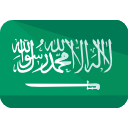
A vast amount of machinery is used in the steel industry to create high-precision finished products. Quite a few of these are essential in the manufacturing process. These machines are crucial in forming steel into sheets, strips, bars, and various other shapes. The two most widely utilized varieties are tandem rolling mills and cluster rolling mills. Although both steel rolling mills are used to process steel efficiently, they differ significantly in their working mechanisms, applications, and advantages.
Tandem vs. Cluster: A Structural and Functional Comparison
Steel rolling mills are critical pieces of metalworking equipment widely used in industries that rely on steel. Although tandem and cluster scenarios solve similar things, they work and produce results quite differently.
Design and Configuration
In a tandem rolling mill, multiple rolling stands are arranged in a series. Each stand reduces the thickness of the material, and the material is continuously passed through the entire line. This configuration is perfect for high-speed production and consistent results. Often used in sheet or strip metal processing, these mills provide high volume with minimal handling.
Cluster rolling mills are more compact, as they have several backup rolls that support the smaller working rolls. The arrangement also controls roll deflection, resulting in better accuracy and less roll wear. Cluster mills, commonly used to produce thin stock, also offer a more controlled environment for better specialty applications.
Application and Industry Suitability
Steel rolling mills are classified into three main categories based on their configuration, serving different sectors. Tandem mills are commonly used for automotive steel, construction-grade sheet metal, and packaging materials. They work with
billet shearing machines and coil processing units to improve throughput in bulk manufacturing environments.
Cluster mills operate in more specialized markets. These mills are favored by the electronics, aerospace, and medical industries because of their ability to shape exotic alloys and thin strips with surprising accuracy. This requirement for parts with a high degree of tolerance makes the cluster mill an absolute must-have for any high-value project.
Flexibility and Upgradability
Hot rolling mill manufacturers in India are well aware of scalability. The size of tandem systems makes them less accommodating to layout changes. These expansions or upgrades require a tremendous amount of downtime and re-engineering.
Cluster mills can be adapted for more flexible usage. Modular construction and centralized control systems make it easier to introduce upgrades that increase automation, improve how rolls are handled, or enhance cooling systems. This makes a cluster setup a more adaptable solution in changing industry spaces.
Production Capacity and Speed
Tandem steel rolling mills are preferred for metal processing at high speeds, which is required for large-scale operations. The configuration also minimizes time and labor costs, as there is almost no gap between rolling stands, making it extremely efficient for mass production.
Tandem systems are popular among most hot rolling mill suppliers in India when fulfilling orders for industries that require bulk processing.
While not as speedy, cluster mills provide better control over thickness and flatness. While speed takes a back seat to accuracy, quality is preferred for delicate materials or premium-grade steel.
Space and Infrastructure Requirements
Space is a key factor in deciding between the two. Due to the longitudinal layout of their stands, tandems require a large amount of space in terms of floor area. As engineers who design plants for high-speed operations realize, saving time and materials in the stamping, cutting, shearing, and coiling processes requires investing in infrastructure.
While cluster mills are more compact, they take up a smaller footprint. Their column structure makes space saving possible, which is an advantage for facilities that operate under spatial restraints. This makes them particularly well-suited for urban manufacturing plants or specialized production lines.
Material Thickness and Tolerance
Thicker materials that may require average tolerances are where tandem mills really excel. Engineered to roll sheets, bands, and plates to meet regular industrial specifications, these mills ensure consistency in high-volume production. Loop rolling systems can achieve a much more precise standard, but with the advent of modern control systems, ultra-fine tolerance is now added on top of this control, still not reaching the best practice of cluster rolling.
In this respect, cluster mills are preferred. Multiple backup rolls prevent the work rolls from bending and enable thickness reductions with tight tolerances. In Cluster
Steel Rolling Mills, it is used in high-grade applications such as dies, maximum devices, and precision equipment.
Maintenance and Operational Costs
The operational complexity and maintenance requirements differ significantly between the two. One of the disadvantages of tandem systems is that they contain more parts, including drives, hydraulic systems, and automation units. Consequently, routine maintenance schedules are crucial in preventing breakdowns and production losses. You typically have higher initial and maintenance costs in most cases.
Although complex in design, cluster mills have fewer moving parts when in use. The slower speeds also cause less strain on components, resulting in lower maintenance costs. However, given the precision required for these mills, roll grinding and alignment require special attention.
Conclusion
The choice between tandem and cluster steel rolling mills depends on various factors, including production goals, material specifications, and precision standards. These different types bring out unique strengths, which are adapted for industrial use. It must be noted that only sophisticated machinery, such as tandem mills, cluster mills, and billet shearing machines, is made available by RMT Tools as rolling mill solutions. They are a good partner to help you with production due to their experience and focus on quality. Contact RMT Tools to discuss your specific rolling mill needs with our expert team.






